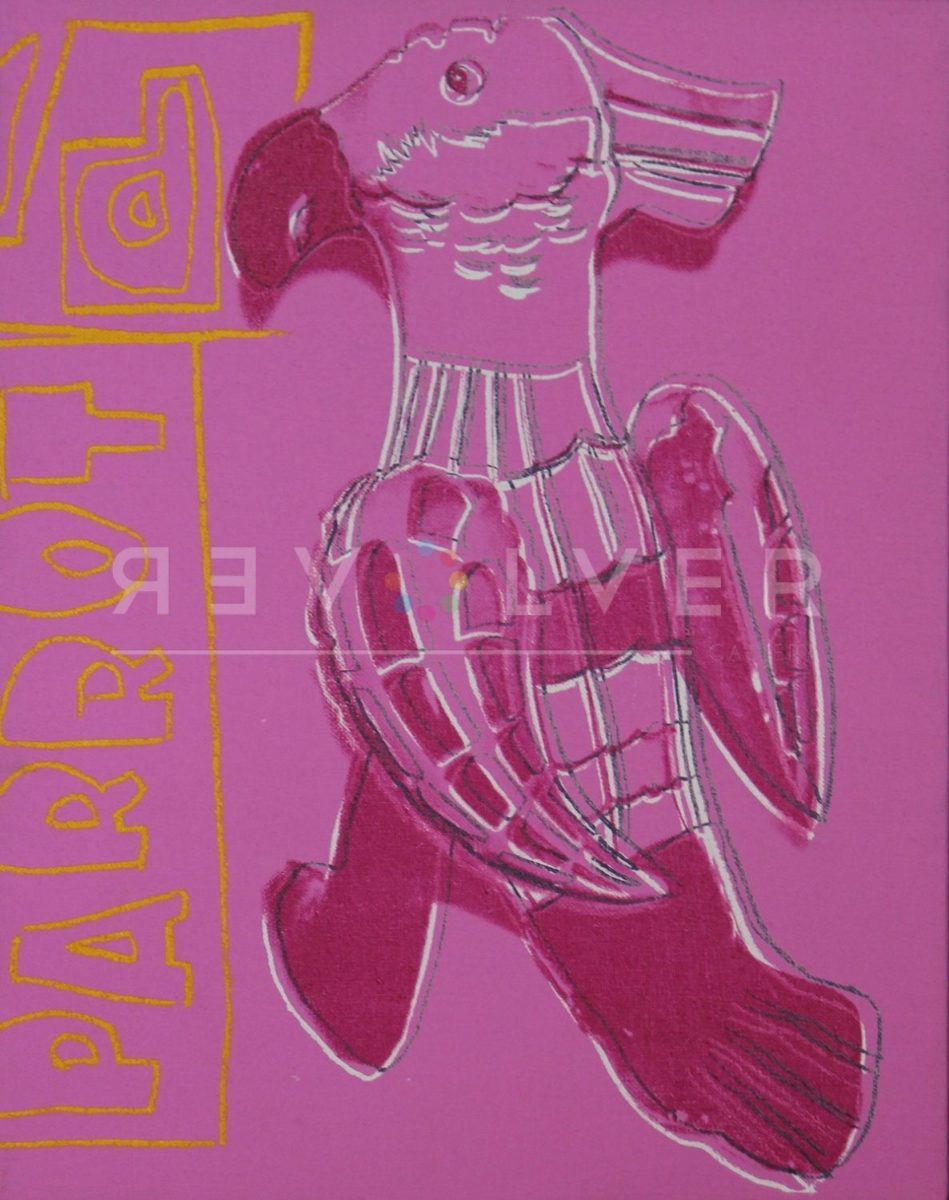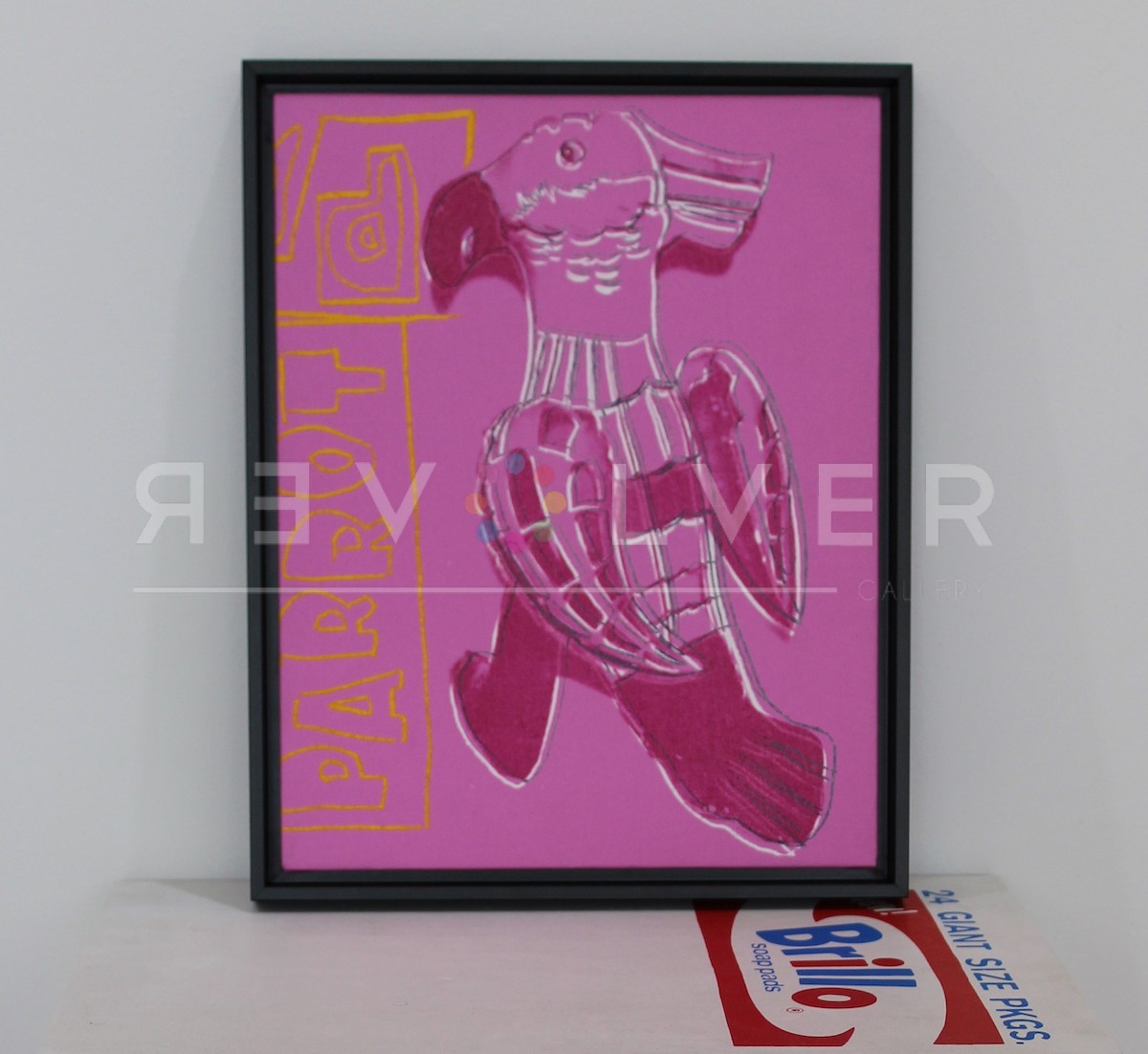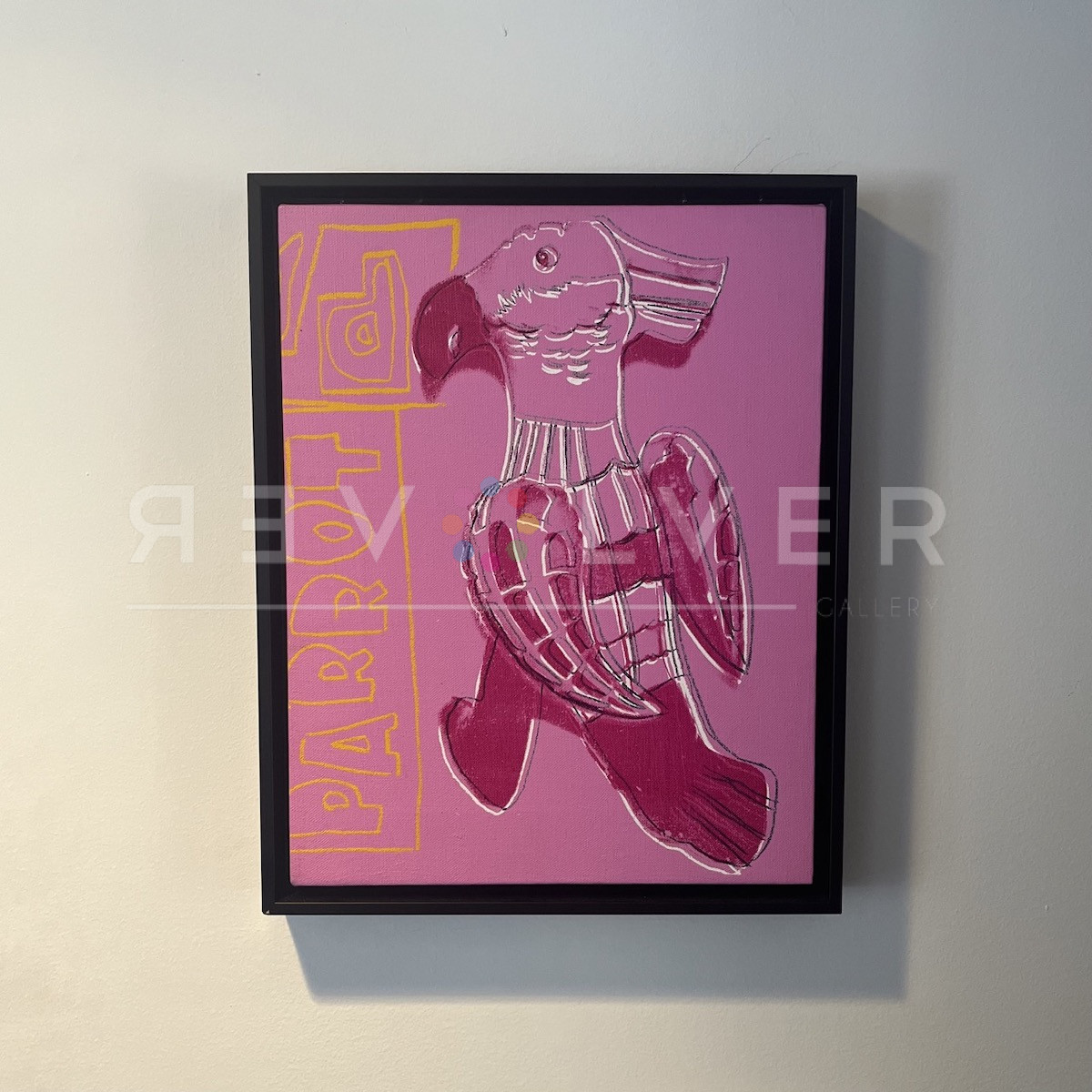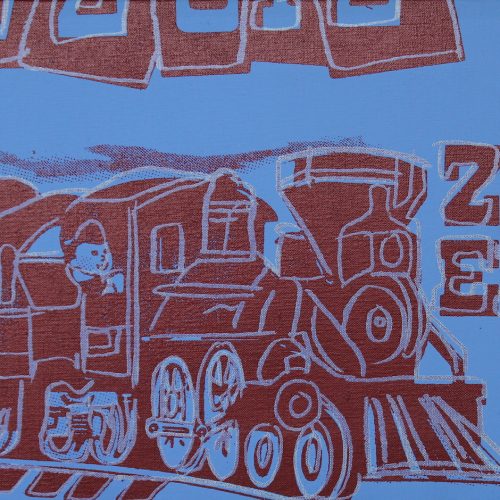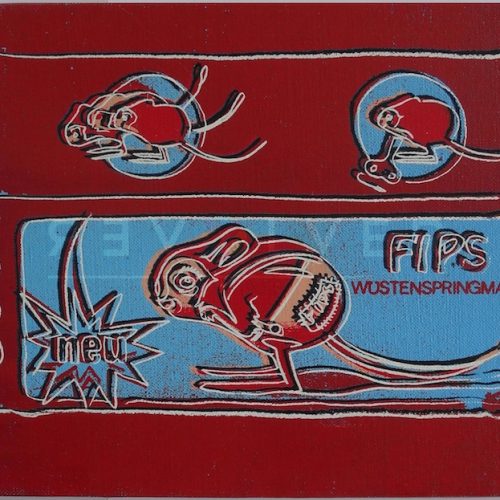In 1983, Andy Warhol unveiled Parrot, a vibrant piece that effortlessly merged the whimsy of childhood with the intricacies of global commerce. As part of his Toy Paintings collection, this artwork was showcased at the Paintings for Children exhibition at the Bruno Bischofberger Gallery in Zürich, Switzerland.
Parrot is a delightful representation of playfulness and consumer ephemera, drawing its inspiration from an inflatable parrot toy manufactured in Japan. Warhol’s keen eye for the commodified and the joyful is evident as he captures the charm of this simple and iconic toy. The source for this unique silkscreen and hand-painted composition was a color Polaroid that Warhol took of the inflatable parrot toy. This medium, known for its immediacy and spontaneity, added a layer of authenticity to the artwork, freezing a moment of pure joy and wonder. In related Polaroids, the parrot is accompanied by other inflatable toys, such as a Dalmatian, an airplane, and a robot—the latter inspiring another one of his Toy Paintings.
Warhol’s use of bold colors and outlines in Parrot gives it a sense of vibrancy and movement. The shadows and contours rendered in a striking duotone, combined with the parrot’s bright hues, bring to life the spirit of youthful imagination. The hand lettering further adds to the playfulness of the image. Beyond its aesthetic appeal, Parrot, when viewed alongside other pieces from the exhibition, offers a deeper dive into Warhol’s observations of the world. The choice to feature toys from countries like Hungary, China, Germany, Russia, Korea, Japan and the U.S. provides a commentary on the universal appeal of toys. On one hand, it celebrates the shared experience of childhood across different cultures; on the other, it offers a poignant reflection on the commodification of play during the late Cold-War period.
Throughout his career, Warhol exhibited a keen interest in the interplay between everyday objects and their cultural significance. “Parrot” is no exception. By capturing the essence of a simple toy, Warhol highlights the societal significance of objects often taken for granted. His choice to focus on toys from various countries adds layers of meaning, touching upon themes of global commerce, cultural exchange, and the universality of childhood experiences.
Warhol’s Toy Paintings not only reflect his fascination with the joyous world of play but also evoke a sense of childlike wonder in viewers of all ages. Just as Picasso and Hans Christian Andersen created paper cut-out dolls to engage with the young, Warhol, too, revered the realm of childhood imagination and creativity. Warhol’s vibrant colors, whimsical compositions, and astute observations beckon viewers from all walks of life into a world of imagination, prompting reflection on the commercialization of childhood. Parrot, as a standout piece in this collection, exemplifies Warhol’s prowess in encapsulating the multifaceted human experience, blending joy with introspection.

